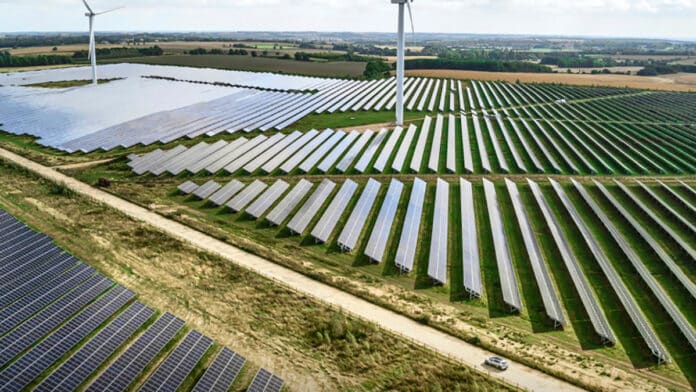U.K. car manufacturer Jaguar Land Rover has partnered with Wykes Engineering to develop one of the largest energy storage systems in the U.K. to harness solar and wind power using second-life Jaguar I-PACE batteries.
Wykes Engineering’s battery energy storage systems (BESS) are capable of supplying power directly to the National Grid during peak hours, according to the JLR statement. Also, they draw power out of the grid during off-peak hours to store for future use.
Each BESS utilizes 30-second-life I-PACE batteries and can store up to 2.5 MWh of energy at full capacity – enough to power around 250 homes for a day.
Weighing 610 kg and measuring 2,280 mm x 1474 mm x 300 mm, the I-PACE battery has a storage capacity of 90.2 kWh and has a range of almost 300 miles (483 km). According to Jaguar Land Rover, the battery has retained 70% to 80% of its original capacity.
The batteries supplied for BESS have been taken from prototype and engineering test vehicles. JLR aims to supply enough batteries to store a total of 7.5 MWh of energy – enough to power 750 homes for a day – by the end of 2023. After this point, more containers can be created to house additional second-life batteries removed from used production vehicles in the future.
Reusing vehicle batteries will create new circular economy business models for JLR in energy storage and beyond. Once the battery health falls below the required level for these second-life use cases, JLR will recycle the batteries so that raw materials can be recovered for reuse as part of a true circular economy.
“One of the major benefits of the system we’ve developed is that the containers are connected to the Grid in such a way that they can absorb solar energy that could otherwise be lost when the grid reaches capacity,” said David Wykes, managing director of Wykes Engineering, in a statement. “This excess energy can now be stored in the second-life I-PACE batteries and discharged later. This allows us to ‘overplant’ the solar park and maximize the amount of power we generate for the area of land we are using.”
